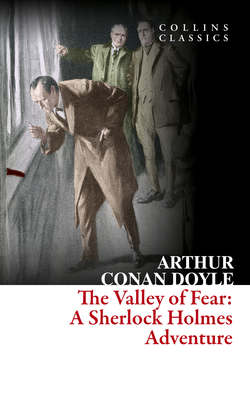Читать книгу The Valley of Fear - Артур Конан Дойл, Исмаил Шихлы - Страница 8
Sherlock Holmes
ОглавлениеArthur Conan Doyle originally invented and wrote about the character of Sherlock Holmes to fill his time during his period as a general practitioner. In 1887 came the first published appearance of Holmes, along with his faithful companion Dr. Watson, in a novel entitled A Study in Scarlet. Then three years after that came his second, The Sign of the Four.
These books established Conan Doyle as a successful author. The Adventures of Sherlock Holmes was published in 1892. Six of the twelve stories are described as ‘adventures’ in their title, because they were originally published singly in The Strand Magazine and this provided a sense of continuity to the reader – a type of ‘product branding’. He had devised the detective mystery novel, considered a new genre at the time. Real-life crime cases were not usually very mysterious, but Conan Doyle recognised a need to elaborate for the sake of producing a good read. It is worth noting, however, that the case of the Whitehall Murders and Jack the Ripper had been prevalent in British newspapers in 1888, making the theme of mysterious crime-solving very topical. In fact, many of Conan Doyle’s fans wrote to him, suggesting that Sherlock Holmes attempt to solve the aforementioned crime. However, the author was wise enough to realise that there should be no crossover between fiction and fact, so Holmes was never called upon.
The private detective Sherlock Holmes was, in essence, a hybrid between the Victorian gentleman scientist and the police detective. The Victorian era marked an historical point where science came into its own as a distinct discipline based on empirical experimentation. Before then, science had been rather more ambiguous in its definition. Physicians, chemists and biologists had shown that the world always operates according to strict scientific rules and laws. It was this new phenomenon of scientific certainty that allowed Sherlock Holmes to confidently solve crimes in an age when police investigation was generally understood to be largely a matter of hit and miss, a mix of luck and judgement. Although a fictitious character, Holmes revolutionised the perception of what could be achieved by way of identifying and collecting evidence from crime scenes, theorising motives and courses of events and pinpointing suspects.
It suited the character development better for Holmes to be a private detective, as he evidently possessed a quality of intellectual genius which, so often, is accompanied by idiosyncrasies and eccentricities that make for a personality ill-suited to the routine and regulations of conventional employment.
To make Holmes believable as a character with an exceptional mind, he also needed to be flawed in certain ways, so the author made him something of a loner, with obsessive, fanatical and addictive traits. The result was a well-rounded character that the reader could understand, if not identify with, because he too had vulnerabilities and weaknesses common to us all. In fact, Conan Doyle openly admitted that the greatest part of Holmes was based on someone he knew: Professor Joseph Bell, a Scottish university lecturer and forensic pathologist. Conan Doyle had been impressed by the way Bell had implemented scientific analysis and detailed observation during post-mortem examinations in deducing the cause of death. Although commonplace now, a forensic approach was something quite new in 1877, when they first met.
Conan Doyle commented that Bell’s force of habit, or inculcation, was one of observation, inference and deduction, so that the most likely cause of death was arrived at by a methodical process of elimination. It was a mindset of reason, logic and the application of acquired knowledge; perfect for a successful private investigator. The term Occam’s razor is sometimes applied to Holmes’ method, because it explains things by reducing, or razing, options so that assumptions and conclusions can be made with a reasonable level of accuracy and confidence.
At Sherlock Holmes’ side in all of his investigations is Dr. John Watson, who acts as an enthusiastic deputy. He also narrates most of the Sherlock Holmes stories, so that the reader experiences events from a second-person perspective. Dr. Watson is intelligent in his own right, but he admires Holmes for his ability to think about things on a higher plane. It is notable that Holmes has no letters before his name, because he is a free thinker and rejects the notion of establishment and official credentials.
Similarly, Holmes has a rather condescending view of those employed at Scotland Yard, the police headquarters in London. Inspector Lestrade is a Scotland Yard detective for whom Holmes has mixed feelings. On the one hand, he considers Lestrade the best detective on the force, but on the other hand, he seems to only tolerate him because Lestrade is useful and efficient at dealing with the more mundane duties of making arrests and providing manpower.
One notable characteristic of Sherlock Holmes is his penchant for dressing in disguise. Conan Doyle saw that it would be useful for Holmes to be a master of disguise, so that he could access situations without the requirement for assistants who might otherwise do the job for him. In effect, Holmes becomes another character while in disguise, thereby allowing him to glean vital information by stealth. In some ways, this was the forerunner to undercover police work, where detectives are expected to covertly gain the trust of criminals by pretending to be part of the gang or by observing from the sidelines. As a plot device, it was useful for Conan Doyle to have Holmes assume different disguises where necessary, to provide intelligence so that segues between elements of the investigation could be made.
